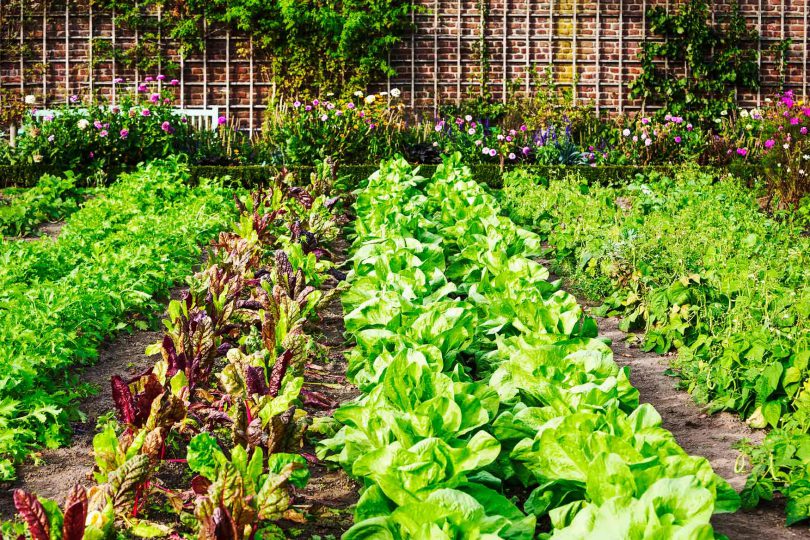Add flavor to your meals all summer long
By Vicki Spencer, Master Gardener
What comes to mind when you think of garden greens? Do you think of delicately flavored Simpson lettuce, a favorite for over 150 years? Do you consider the many options advertised in seed catalogues? Do you prefer romaine lettuce, spinach, arugula or kale? Should you plant greens for other culinary uses like soup, pasta and garnishes?
Each year I traditionally planted the same leaf lettuce and spinach that my mother grew so effortlessly. Only after participating in a neighborhood garden tour did I experiment with other greens. To my surprise, a local garden center brought trays of starter plants to one of the tour sites to give away. Not wanting to be greedy, I asked if I could take two plants. To my delight, the representative encouraged me to try all the different greens and take as many as I wanted. I had just built a planter box around a large deck and the timing was perfect. Although I had planted flower bulbs, they would take time to emerge. Meanwhile, the greens would immediately add color.
I selected five different kale plants (Russian, dwarf Siberian, purple, big leaf, blue); three lettuce plants (green leaf, red leaf, butter); and arugula, spinach and endive. I had never cooked with kale but had enjoyed it in my daughter’s cooking, so I decided to give it a try. Besides, if my culinary skills failed, the unique kale leaves would be lovely in the planter. The greens flourished, flavored my meals all summer and provided a host of nutrients, including vitamins A, B, C, and K and potassium. Kale is very hardy and the plants survived winter in a well-protected location.
Select greens based on your taste and nutrient preferences. Arugula, with its peppery taste, contains the most calcium, along with vitamins A, C, K and manganese, which protects bones. Substitute arugula for spinach in salads or add to pasta and soups. Kale is amazingly versatile. Add it to salads, braise for side dishes, blend into smoothies, or spray with olive oil and a dash of salt before roasting into chips. Dandelion greens and escarole are bitter compared to iceberg lettuce but are known for detoxification qualities. Mix with other greens or blanch with olive oil and lemon juice to cut the bitterness.
Kale, turnip, mustard and collard are members of the cabbage family. Collard greens are essential for plant-based diets as they provide protein, calcium and cancer-preventing B6. Collard is tolerant of extreme heat and cold but gets more bitter in the heat.
Swiss chard, a member of the beet family, has grown in popularity as a leafy green. It is best cooked and contains antioxidants, iron, carotenoids that protect eyes against UV rays, and folate needed for healthy pregnancies. Bok choy, a cruciferous green delicious in stir fry dishes and soups, has antioxidants and selenium which aids cognitive function, thyroid function, metabolism and immunity.
Greens are best grown in a cool spring or late fall garden and do best in full sun and moist soil. Harvesting leaves regularly will encourage fresh growth.
Regardless of your selection, these things are certain: You can grow a wider variety than you’ll find at the grocery store, and homegrown greens will taste much better and have more nutrients when picked right before eating.
Gardener Vicki Spencer has an eclectic background in conservation, water, natural resources and more.

